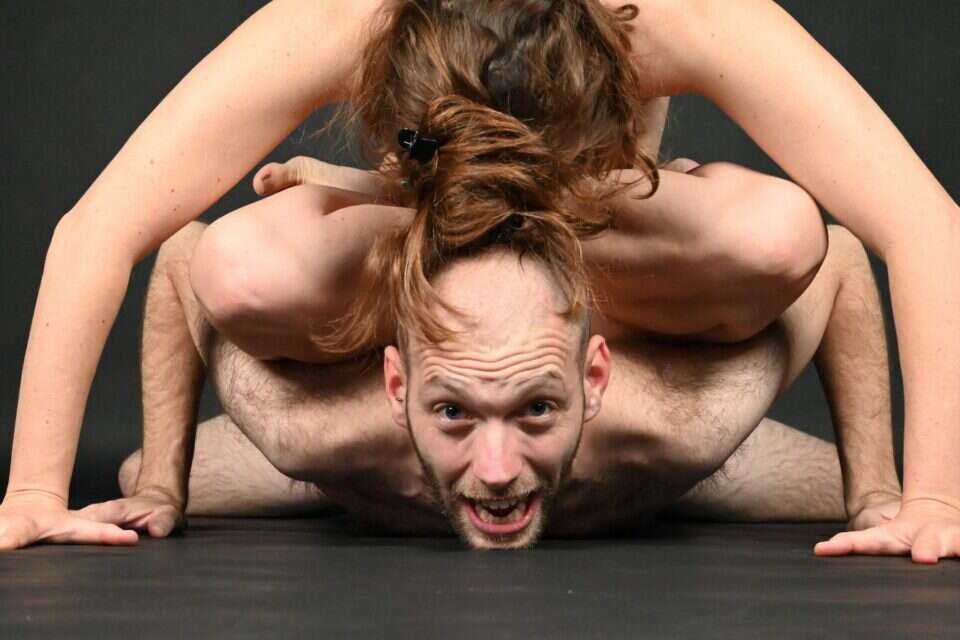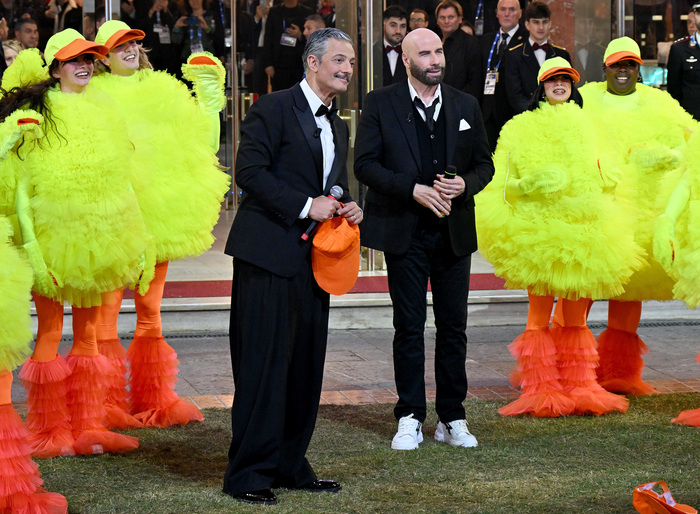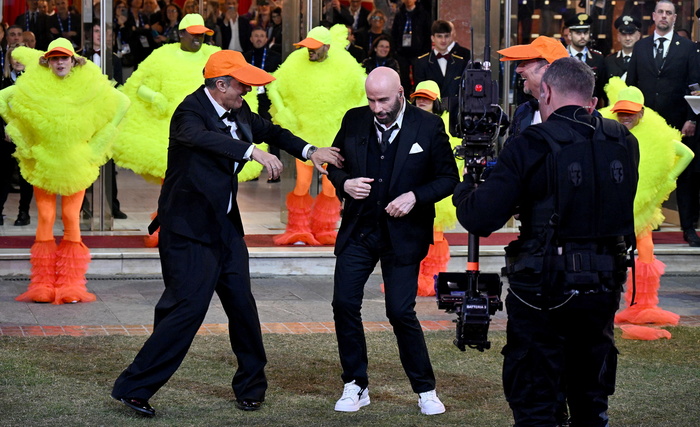Three dance premieres will be staged as part of the Tamune Festival, and will challenge the theatrical experience.
The choreographers will use the body, time and spaces of the theater, and ask basic questions: Who is allowed to go on stage?
What is the role of the audience?
What experience is created during a show?
This, in the hope that their audience will undergo a transformation and leave the show in a different way than when they entered it.
The creator Ado Feder activates the audience ahead of time, asking them to prepare and wear black for the arrival to the "Dynasty" show.
The show was created for two young dancers, Omri Rosen and Roi Ariam, and the older performance artist, Michal Samma, and is a kind of mourning ceremony inside the theater.
The act of dressing up is physical and mental, and it makes the audience begin to imagine the show and the atmosphere that will prevail in it already at home.
Even during the show, which Feder describes as a "journey inside the theater", the audience will move like a gathering of black shadows and its presence will give validity to the ritual: "I invite the audience to be part of the myth".
The myth in the classical sense is a folk tale whose function is to explain unclear phenomena.
It deals with primary, seemingly natural questions, which makes it a cultural force.
Feder summons theatrical, family, erotic myths to the stage, and examines the traditional influences and primordial customs within a contemporary theater in the city center.
For him the work "Dynasty" is a return to the theater after several years in which he created online or non-theatrical alternatives.
If his previous work "High School" (2019) was a preparation ceremony for the apocalypse, then a year later the plague appeared and demanded to reboot the system.
Now he wants to "return to the catastrophe" and listen to the remains of the "black box" in the double sense: the theater known as "black stage" or the box that survives a plane crash.
The human crash and the existential questions that became urgent and frequent caused him to perform a post-traumatic ritual, which seeks to "shed the grief and the melancholy".
From the show "Dynasty", photo: Ado Feder
In the case of the veteran choreographer, Rachel Ardus, the question of the body came unexpectedly.
"For years I didn't want to create a work that talks about periods and boobs, but now is the time!".
The 45-year-old Erdos recently became a mother and if until then she thought she was some kind of Peter Pan, she met the reality that told her: "You are too old."
Too old to conceive, too old to perform, too old to stomp and hold workshops all over the country.
Within the medium of dance that sanctifies the body, and in a culture that censors old age - especially women - it was important for Ardos to bring women of a wide range of ages to the stage.
In her new work "I'm too old for this ***", she brings together eight women in the age range between 13 and 71, all of whom have a background in theater or dance.
The show is the product of workshops that Ardos has held in recent years, where she is delighted by the unusual meeting between the women.
"I realized during the workshops that it is not customary to meet women of different ages, but only within the family, a sister or a mother for example. But it is not the same at all. This meeting allows a lot of freedom that cannot exist even within a family due to an experience of embarrassment or fear of the reaction."
Erdos seems to be the head of this tribe and Gila places her right in the middle between puberty and old age.
In her eyes, there is nothing more exciting than the dance of a 13-year-old girl with a 71-year-old woman created through touch, gaze and understanding of the body.
The age gap creates amusing scenes, some on stage and some in the moments in between, and Vardos is required to mediate.
She is curious about the common as well as the separate.
For example, when some of the women confess about a new love in their lives - first love of youth or chapter two - and it is surprising how much similarity there is.
She gave up on a scene that includes lifts in the air and sand acrobatics, even though in her head "it was amazing", because the physical work did not pass the age challenge.
Erdos feels that she is opening a door for female partnership and therefore the presence of the audience is necessary to tell a new story and make what is not visible visible.
From the work of Erdos, photo: Efrat Mazor
The work "Solo for a yoga teacher" hints at two interesting issues already in its name - the first indicates a reversal of roles between a student and her teacher, when the teacher is the one who is invited to the stage and not the other way around.
The second challenges the conventions of yoga as an ancient method of practice, which should take place behind the scenes and not in the center of a show.
Daniel Galia-Kind, who created the work, shares that she is constantly searching for the right practice method for her.
"Perhaps because I am a teacher by nature, I have a need to find," she said.
She heard from word of mouth about a small, hidden studio in Jaffa and there she met her teacher, Moran Bezner, who continued to accompany her for years to come.
A few months ago during the sample class at Zener, I switched from one asana (yoga pose) to another.
This was the moment when the idea for the show was born.
"In one second, her movement became performative in my eyes. A lot of images went through my head and I realized that it should be put on stage."
The discovery about the ability to experience movement even without its physical realization shocked Galia-Kind and this is what she hopes to bring about at the festival.
"I invite the audience to practice by watching."
The practice of study and tradition was challenged when Bezner was injured and Galia-Kind realized that the "solo for the yoga teacher" would take place without the yoga teacher.
Disappointed but up for the challenge, she turned to a dancer she knew, and they began to rework the existing materials in another course of delivery, which would restore knowledge and renewed development.
One might think that the process of handing over - from Galia-Kind's body to her teacher and then to the new dancer - would create an erasure of the original movement, but Galia-Kind enjoys the position: "It gives me happiness to be a conduit of teaching. I don't think my voice has disappeared, but that there is a combination of voices."
Galia-Kind, similar to the spirit of her creative colleagues, Ado Feder and Rachel Ardos, believe that the stage has power.
The stage is the "Agora" - the city square, where dancers and audience gather together to practice observation, participate in a ceremony and imagine the future.
It seems that the contemporary creators conduct a dialogue with stage conventions not for the sake of provocation, after all, all the boundaries have already been stretched, but in order to expand the discourse and bring the audience closer - each to his own sensational discovery.
were we wrong
We will fix it!
If you found an error in the article, we would appreciate it if you shared it with us







/cloudfront-eu-central-1.images.arcpublishing.com/prisa/XSO4XYYIOJGKNPSUBHUGGDBMFU.jpg)
